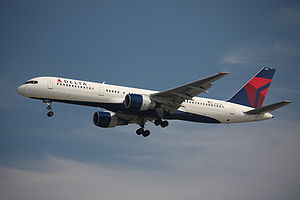|
Listen to this Article
|

With America’s belt line expanding, airlines are finding that they have to begin going into that grey area that surrounds those who are considered ‘customers of size’. While most airlines have policies in place regarding the treatment and protocol of those with a larger waistline, only recently have these policies become more prominent with the media.
According to the Federal Aviation Administration (FAA), a passenger must be able to secure the seatbelt around them, with both armrests down, in order to fulfill the standard safety regulations.[1] Some airlines further add to this standard by putting their own policies in place.
Southwest Airlines requires ‘customers of size’ to purchase two seats when they fly. If, however, the flight is not full, the price of the second seat will be reimbursed.[2]
Delta Airlines will provide another seat to larger individuals, provided that the flight is not full. If it is, they require the individual to wait for the next flight, in which case they may be required to purchase a second seat.[3]
The above policies would be considered the average policies across the airline industry in the United States. Some policies are so lax that there are no policies at all – United Airlines, for example. Whereas some airlines have no leeway at all. JetBlue Airways requires that larger passengers purchase a second seat, with no refunds, even in the event that the flight is not full.[4]
These policies on occasion lead to disagreements between passengers and airlines. And these disagreements can only be sorted out through the courts at times.
Southwest was successfully sued by a passenger, after she was told the she had to purchase a second seat, although the woman had already boarded. The courts ruled in favor of the plaintiff, not because of discrimination issues, but simply because the airline asked the woman to purchase the second seat too late.[5]
Looking at these policies and court cases, the question arises as to whether these policies are discriminatory towards ‘customers of size’ and whether these individuals should be granted legal protection under discrimination and harassment statutes.
A spokesman from United Airlines stated that their policy was created “…for the comfort and well-being of all our guests on board.”[6] However, some people still believe that the policies are not enough to provide ‘comfort’ for all passengers.
As a result, both heavier passengers and those complaining about larger passengers have filed lawsuits against airlines. Because there are no discrimination laws to protect those with obesity, however, the lawsuits cannot be based on this. Thus, the courts have had to rule that airlines and their policies are within their rights to require ‘customers of size’ to purchase additional seats.[7]
So are airlines doing the right thing? Or do they need to adapt further to the obesity epidemic?
For example, should our airlines begin to take the direction that the Samoan Airlines have – charging passengers on the basis of what they weigh?
The Samoan policy was introduced in January this year, with rates beginning from $1 per kilogram on most domestic routes, ranging to $4.16 per kilogram to American Samoa.[8]
An economist from Norway – Bharat P. Bhatt – backed up the Samoan Air changes, saying that it would benefit the passengers overall. “[T]he degree that passengers lose weight and therefore reduce fares, the saving that result are net benefits to the passengers.”[9]
So does Samoa have it right? Would charging the passengers by weight encourage those with a larger waistline to lose some weight – and overall, reduce the problems associated with individuals who spill over their armrests?
This might be a situation where we wait and see how well it works for Samoa, before attempting it in throughout the United States.


